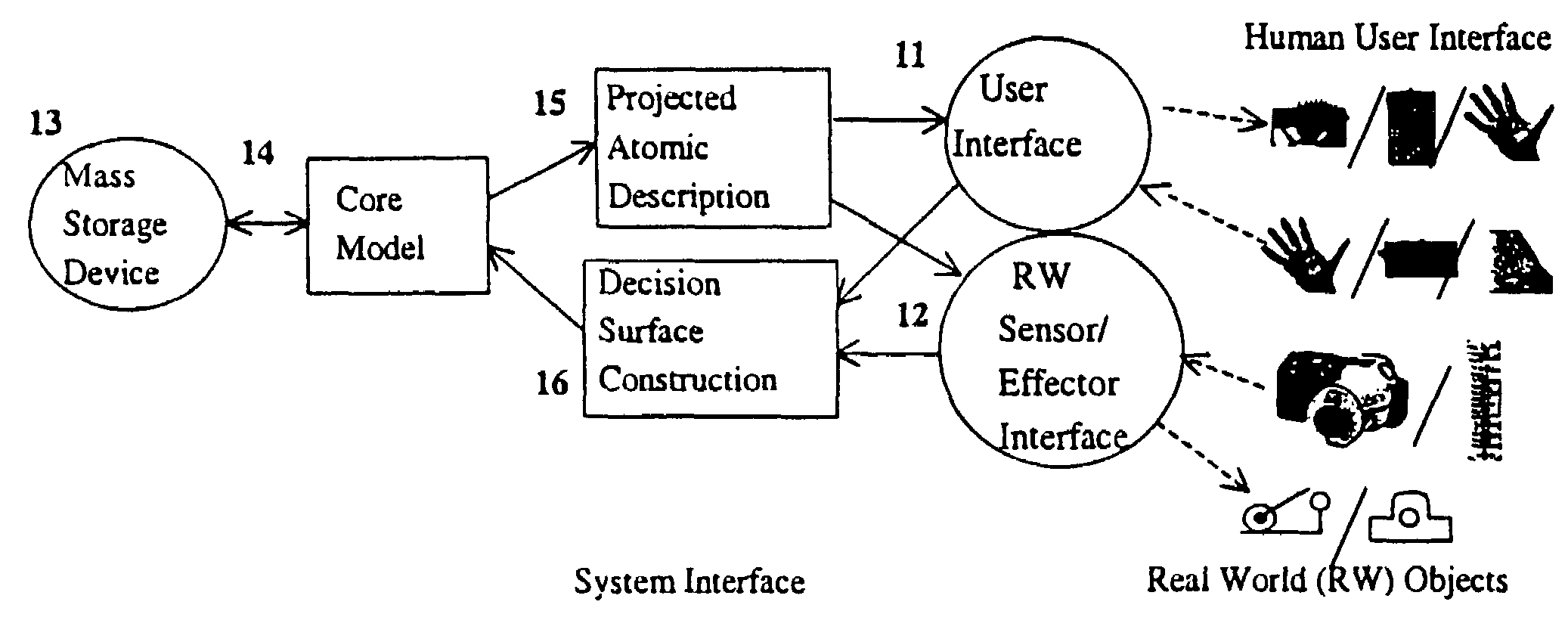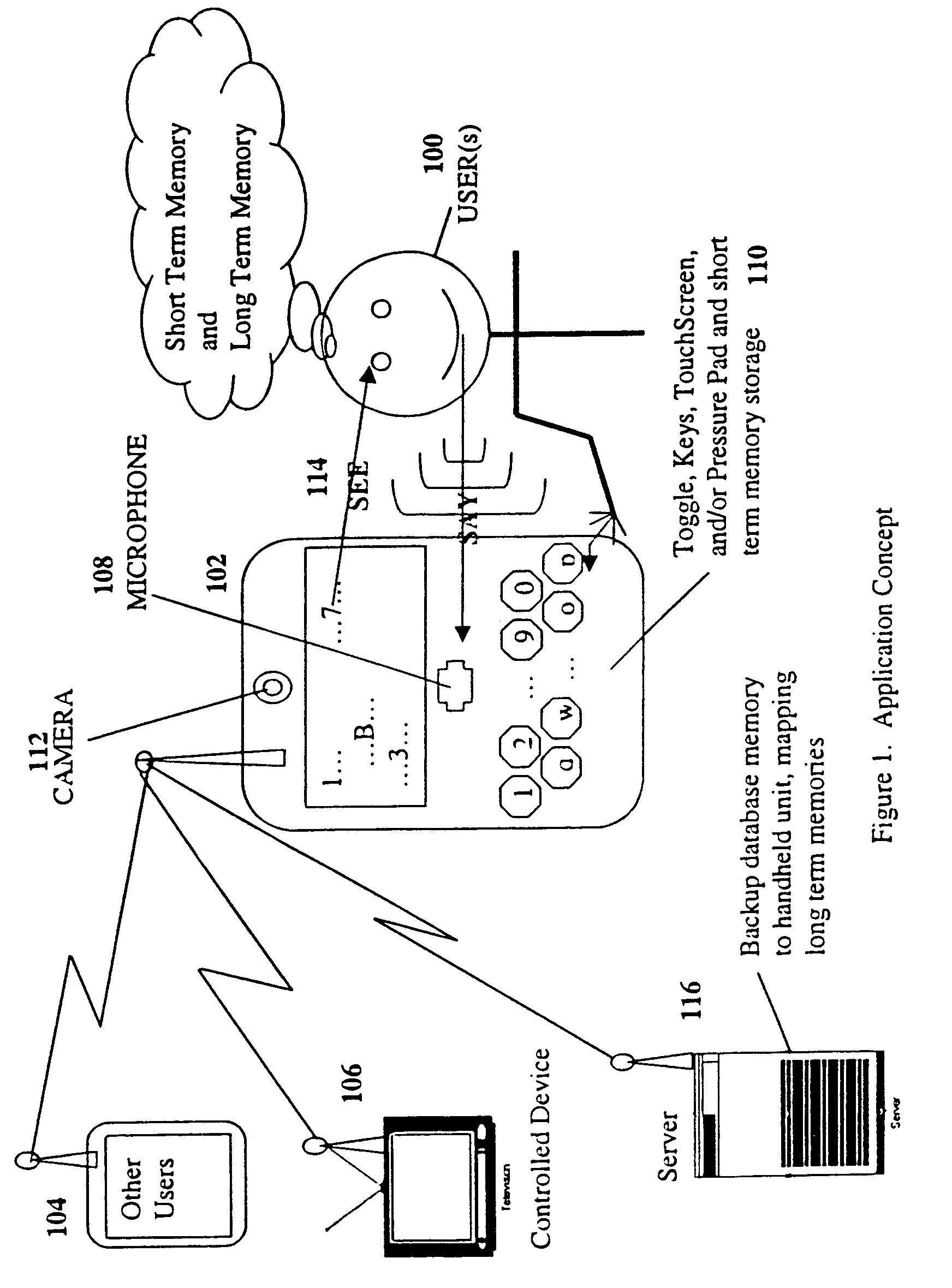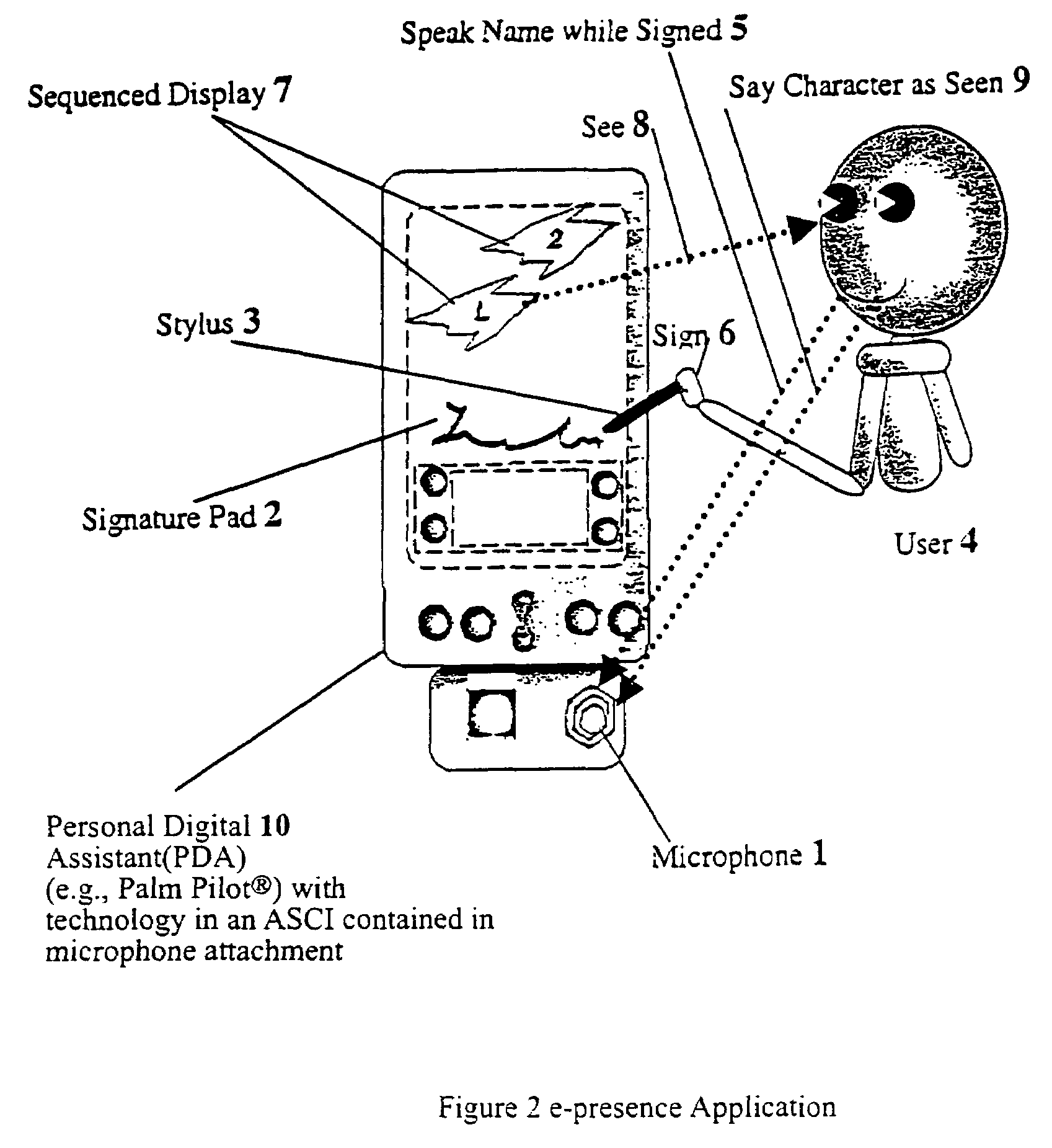[0037]The system and method described in the detailed description below are
usable to, among other things, generate outputs in response to real world stimulation. These outputs are generated by capturing concurrent inputs that are responsive to training stimulation, storing a model representing a synthesis of the captured inputs (that may be based on a mathematical projection of a hyperspace-modeled OD), and using the stored model to generate outputs in response to real-world stimulation. The system and method may be used in a wide variety of
human interaction applications and apply to conventional storage and presentation devices, permitting the system and method to be easily incorporated into a variety of commercial products that utilize human-
machine interfaces (e.g., HMI
graphical user interface, or GUI) and current
mass storage devices. By way of example, not limitation, the system and method may be applied to user presence and / or identification. In this case, the concurrent inputs may be
handwriting and speech. In one particular example, the speech may be related to the
handwriting such as when a person speaks his or her name while at the same time writing his or her name. A model representing a synthesis of these concurrent
handwriting and speech inputs is stored. The model may, for example, be a worldline of linked object diagram exemplars in an N-dimensional space. The real world stimulation may be concurrent handwriting and speech inputs that are compared to the stored model, and the outputs (e.g., an identity
verification) may be based on the results of the comparison. The use of a
mass storage device, such as but not limited to an RDB, linked to the OD model by projections and NN / TC decisions in a binary taxonomy mapping, provides for a continuous expansion of each application complexity. The methodology of the present invention may be at least partly incorporated into a
computer software program, a hardware
processing engine, a specialized
hardware application specific
integrated circuit (ASIC)
chip, or net
list representations for a variety of ASIC technologies.
[0038]The system and method may further include a forced choice interaction that generates one or more additional inputs that are captured and incorporated into the model. In the case of user identification, the forced choice interaction increases the probability of correct user identification, and can include measurements of user emotions and / or stress. For user identification, the forced choice interaction generates speech inputs that are responsive to a display of one or more images that may each include one or more letters, characters, numbers, symbols, images, etc. and combinations thereof.
[0043]None of this prior art involves access in information structures for dimensions N>3 or incorporates adaptive decision processes using neural-networks (NN) as a form of N-dimensional
cell correlation representation. None of these approaches in information construction, organization, or prediction, incorporate higher-order correlation or HOS, and avoids the common AI ES, IF-THEN-ELSE, and logic-tree constructions. All
template matching and correlation of this prior art are restricted to 2-D, linear techniques. None of this prior art incorporates an AC for
user information testing with emotional sensing to construct common-information knowledge in a LTM, and also create
confusion in a STM forced-choice
decision process. None of this prior art incorporates the
metrics of the IC in information flow parameters of rate c,
channel capacity (CC), and
information system length L and the temporal parameters of τ,crn, crn, T, and cost functions CR, CL, CF and redundancy function Re. None of this prior art uses entropy, H, as a metric function of the OD representation vector space spanning distance {tilde under (D)}, for controlling analysis resolution, nor does it use predicate calculus for link location in a RDB. None of this prior art simplifies the OD model to a set of points in an N-dimensional space, which is expandable through an extension to the LTM storage of projection operators and decision surfaces, rather than explicit examples through feature attributes. By using a partially correlated axis space, which can be fractal in nature, this representation is expandable through subspace constructions at any later point in time, without loss of original
model parameters. This invention addresses the original RDB constructions and avoids the approximations used in
SQL development. The invention incorporates the simultaneousness of the input features in an N-D
spatial correlation for a unique utility and storage of human and sensor information.
 Login to View More
Login to View More  Login to View More
Login to View More 


